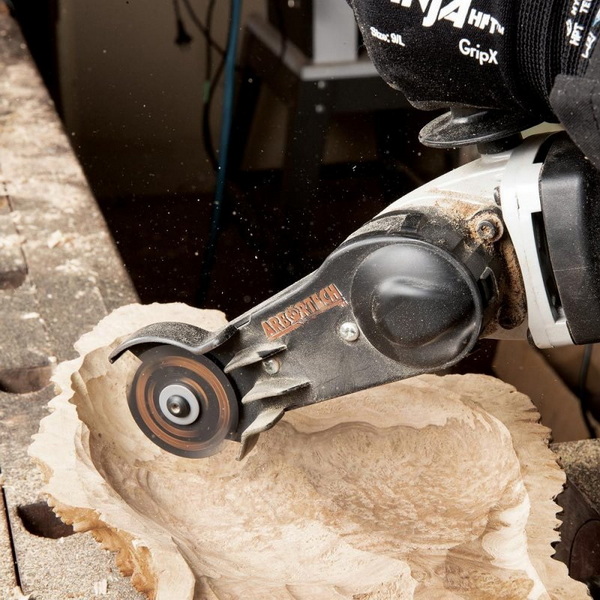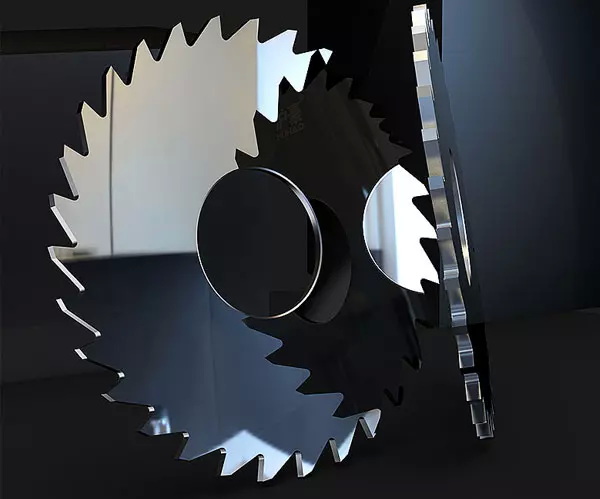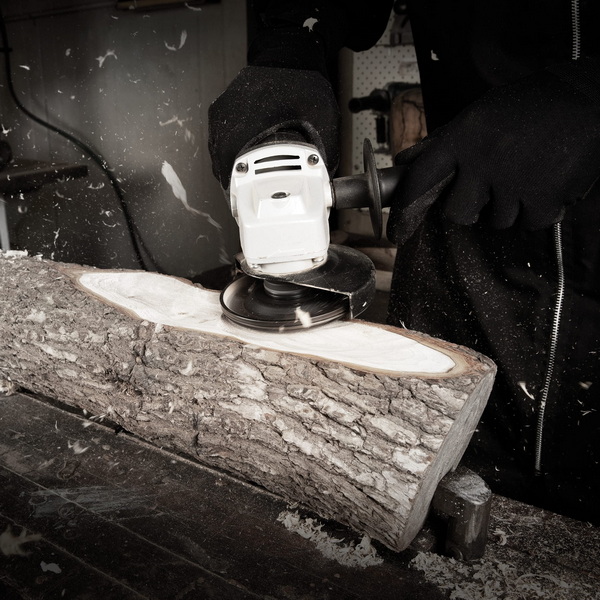Content Menu
● Introduction
● What Are Carbide Saw Tips?
>> Why Carbide?
● Understanding Grain Sizes: Micrograin vs. Submicron
>> What is Grain Size in Carbide Saw Tips?
● Properties and Advantages of Micrograin Carbide Saw Tips
>> Key Features
>> Best Applications
● Properties and Advantages of Submicron Carbide Saw Tips
>> Key Features
>> Best Applications
● Key Differences: Micrograin vs. Submicron Carbide Saw Tips
● How Carbide Grain Affects Saw Tip Performance
>> Hardness & Wear Resistance
>> Toughness
>> Edge Quality
● Choosing the Right Carbide Saw Tip for Your Application
>> Key Factors to Consider
● OEM & Custom Manufacturing: Why Tip Selection Matters
● Maintenance Tips for Carbide Saw Tips
● Cost Considerations and ROI
● Environmental Impact and Material Efficiency
● Conclusion
● FAQs
>> 1. What are the main differences between micrograin and submicron carbide saw tips?
>> 2. Which type of carbide saw tip lasts longer?
>> 3. Can I use submicron carbide saw tips for woodworking?
>> 4. How do I maintain carbide saw tips for maximum life?
>> 5. Does choosing the right saw tip affect my production costs?
Introduction
When it comes to achieving clean, precise cuts in industrial manufacturing, Carbide Saw Tips stand out for their durability and efficiency in cutting a broad range of materials. The choice between micrograin and submicron carbide saw tips can significantly influence your production quality, tool life, and overall operating costs. In this comprehensive article, we'll dive deep into the science, benefits, and applications of both types, providing practical advice for manufacturers, OEM suppliers, and wholesalers. By the end, you'll have a detailed understanding of which carbide saw tip is best for your particular application.

What Are Carbide Saw Tips?
Carbide Saw Tips are small cutting inserts made from tungsten carbide—a robust material formed by combining tungsten with carbon at high temperatures. These tips are brazed or welded onto saw blades used for processing a wide array of materials, including wood, metal, plastics, and composites.
Why Carbide?
- High Hardness: Retains sharpness longer than steel.
- Wear Resistance: Withstands abrasive materials.
- Thermal Stability: Performs well at high temperatures.
- Versatility: Suitable for many cutting scenarios.
Understanding Grain Sizes: Micrograin vs. Submicron
What is Grain Size in Carbide Saw Tips?
Grain size refers to the size of individual tungsten carbide crystals within the saw tip. This factor directly impacts the saw tip's performance:
- Micrograin Carbide: Grain size is typically 0.5–1.0µm (micrometers).
- Submicron Carbide: Grain size is even finer, often below 0.5µm.
Microstructural differences result in unique properties for each type.
Properties and Advantages of Micrograin Carbide Saw Tips
Key Features
- Toughness: Micrograin carbide offers a superb balance between hardness and toughness, making it less prone to chipping under impact or vibration.
- Edge Retention: Maintains a sharp edge for an extended period, especially when cutting softer metals and wood.
- Cost-Effectiveness: Generally, micrograin carbide is less expensive than submicron due to easier fabrication.
- Versatility: Handles a variety of materials and cutting conditions with ease.
- Impact Resistance: Its toughness allows better performance in interrupted cuts or abrasive setups.
Best Applications
- Woodworking: General saw blades, circular saws, and jointers.
- Non-ferrous Metals: Effective for cutting aluminum, copper, and brass.
- Plastic & Composites: Performs well under moderate speed and impact.
- General Manufacturing: Suitable for small to medium volume production where consistent tool life and quality are needed without high costs.
Many manufacturers rely on micrograin carbide saw tips due to their forgiving nature when blade maintenance is intermittent, and in environments where occasional tip impact may occur.
Properties and Advantages of Submicron Carbide Saw Tips
Key Features
- Superior Hardness: Finer grain structure maximizes hardness, enhancing wear resistance significantly.
- Improved Edge Sharpness: Enables the fabrication of ultra-fine, razor-sharp edges, leading to superior cut quality.
- Extended Tool Life: Better suited for high-volume or precision operations, reducing the frequency of blade replacement.
- Thermal Stability: Maintains performance even under high cutting temperatures, reducing deformation.
- Excellent Dimensional Stability: Keeps shape and edge geometry longer, essential for CNC and precision cutting.
Best Applications
- Metallurgical Cutting: Especially suitable for stainless steel, carbon steel, and tough alloys that tend to wear down conventional tips quickly.
- Precision Machining: Essential for electronics, aerospace parts, and components requiring exceptionally tight tolerance and finish.
- Abrasive Materials: Ideal for high-silica woods, fiber-reinforced plastics, and composite laminates where cutting edges face rapid dulling.
- High-Speed Operations: Optimized for industrial setups where saw speeds and feed rates push tooling to limits.
For industries where minimal downtime and reliable high finish quality are paramount, submicron carbide saw tips outperform alternatives despite their higher cost.

Key Differences: Micrograin vs. Submicron Carbide Saw Tips
| Feature |
Micrograin Carbide Saw Tips |
Submicron Carbide Saw Tips |
| Grain Size |
0.5–1.0µm |
<0.5µm |
| Hardness |
High |
Very High |
| Toughness |
Very Good |
Good |
| Edge Retention |
Excellent |
Superior |
| Wear Resistance |
Good |
Excellent |
| Cost |
More Budget-Friendly |
Premium |
| Typical Application |
Wood/soft metals |
Steel/hard alloys/abrasives |
| Impact Resistance |
Higher |
Moderate |
| Thermal Stability |
Good |
Excellent |
Understanding these differences is essential for selecting the correct carbide saw tip that balances cost and performance for your specific needs.
How Carbide Grain Affects Saw Tip Performance
Hardness & Wear Resistance
The smaller the grain size, the more grain boundaries act to impede dislocation movement, increasing hardness and wear resistance. This is why submicron carbide saw tips last longer cutting tougher materials or abrasive composites.
Toughness
Despite its hardness, smaller grains sometimes reduce toughness, meaning submicron carbide saw tips can be more brittle and susceptible to chipping if used incorrectly. Micrograin carbide saw tips compromise slightly on hardness to gain more toughness, reducing breakage in impacts and uneven cutting conditions.
Edge Quality
Submicron tips can be ground to finer edges with less microchipping during manufacturing, equating to smoother cuts and minimal need for tool dressing.
Choosing the Right Carbide Saw Tip for Your Application
Key Factors to Consider
- Material to Cut: Hard or abrasive materials (carbon steel, stainless steel, composite laminates) benefit from submicron carbide saw tips. Soft metals, wood, and plastics work well with micrograin tips.
- Cutting Speed: When operating at high speeds, submicron tips endure heat and wear better.
- Budget: Cost-sensitive projects with less stringent edge quality demands should consider micrograin carbide.
- Production Volume: Long production runs justify investment in premium submicron carbide saw tips.
Industry-specific needs often dictate the best choice: furniture manufacturers often prioritize micrograin carbide tips, while aerospace and automotive sectors frequently require submicron variants.
OEM & Custom Manufacturing: Why Tip Selection Matters
For OEMs supplying quality saw blades to international markets, choosing between micrograin and submicron carbide saw tips is a pivotal decision. This affects:
- Flawless Production: Ensuring your blades achieve the required cutting specifications, branded product performance, and customer satisfaction.
- Tool Longevity: Reducing downtime caused by frequent blade changes.
- Cost Control: Balancing upfront tooling costs with long-term efficiency gains.
Tailored OEM services also allow manufacturers to request carbide grain specification adjustments to optimize blades for unique materials and cut types, driving improved competitiveness.
Maintenance Tips for Carbide Saw Tips
To maximize the lifespan and maintain the performance of carbide saw tips, adopt these best practices:
- Regular Inspection: Check tips for signs of chipping, cracking, or wear, especially after heavy use.
- Sharpening: Use grinding wheels with appropriate grit and conditioning specific to carbide grain; submicron carbide often requires finer abrasives.
- Heat Management: Avoid prolonged heat exposure by optimizing feed rates and using coolant systems where feasible to preserve tip integrity.
- Cleaning: Remove resin, pitch, and debris buildup regularly—especially with wood and composites—to prevent edge degradation.
- Proper Storage: Store saw blades and tips in dry environments to prevent corrosion of braze joints.
Well-maintained carbide saw tips can offer lasting performance and justify initial investment.
Cost Considerations and ROI
While micrograin carbide saw tips provide an economical upfront cost, frequent replacements in demanding environments can increase total expenses. Conversely, submicron carbide saw tips represent a higher initial purchase price but often deliver superior ROI through reduced blade changes, fewer production interruptions, and fewer quality-related defects.
When selecting between the two, consider your operational environment, production requirements, and budget constraints. ROI calculations factoring in downtime, material wastage, maintenance labor, and tool expenses will often show that premium carbide options can reduce long-term total costs.
Environmental Impact and Material Efficiency
Choosing high-performance carbide saw tips supports sustainability by:
- Reducing Waste: Longer tool life means fewer discarded blades.
- Energy Efficiency: Efficient cutting reduces machine power consumption and heat generation.
- Material Optimization: Sharp, durable tips minimize material damage and scrap rates.
- Recycling: Tungsten carbide scrap can often be recycled, including tips from both micrograin and submicron types.
Being mindful of these factors aligns well with modern industrial goals toward greener manufacturing.
Conclusion
Selecting between micrograin and submicron carbide saw tips hinges on your specific cutting needs, application demands, and cost considerations. If you primarily process soft materials with budget constraints, micrograin carbide remains an excellent, reliable choice. For industries requiring flawless finishes, maximum tool life, and supreme precision—especially in tough or abrasive environments—submicron carbide saw tips are the premium solution.
Partnering with an experienced OEM supplier ensures access to both types, tailored to your exact requirements, helping you maximize productivity and product quality.

FAQs
1. What are the main differences between micrograin and submicron carbide saw tips?
Micrograin carbide saw tips have grain sizes between 0.5–1.0µm, offering good toughness and edge retention suitable for wood and soft metals. Submicron carbide saw tips have even finer grains (<0.5µm), providing extreme hardness and wear resistance for tough or abrasive materials.
2. Which type of carbide saw tip lasts longer?
Submicron carbide saw tips typically last longer when cutting hard or abrasive materials due to their enhanced wear resistance. However, micrograin carbide saw tips can perform comparably well on softer materials.
3. Can I use submicron carbide saw tips for woodworking?
Yes, but they may be considered over-engineered for standard woodworking unless you require exceptional cut quality, such as in laminates or very hard woods. Micrograin carbide saw tips are often more cost-effective for general woodworking needs.
4. How do I maintain carbide saw tips for maximum life?
Perform regular inspections, use the correct grinding wheels for sharpening, avoid overheating during use, and clean the tips frequently to prevent resin or debris buildup.
5. Does choosing the right saw tip affect my production costs?
Absolutely. The right carbide saw tip minimizes downtime, reduces the number of replacements, ensures higher quality cuts, and can substantially decrease total production expenses in the long term.
















